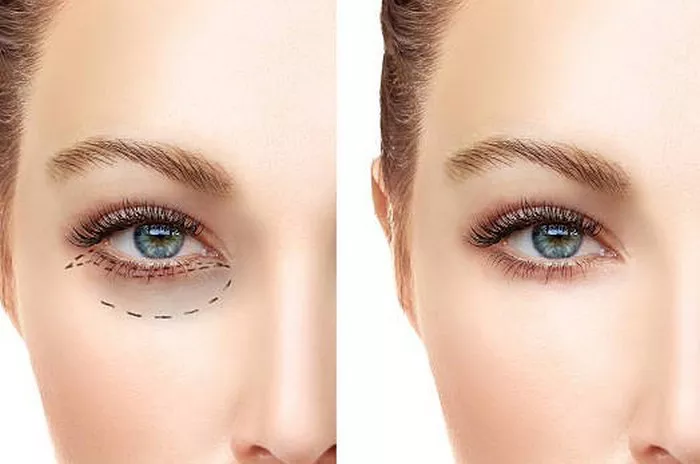Undergoing blepharoplasty, commonly known as eyelid surgery, is a transformative decision aimed at rejuvenating the eyes and restoring a youthful, refreshed appearance. As individuals embark on this journey to enhance the aesthetics of their eyelids, a crucial aspect that demands consideration is the recovery process. In this comprehensive exploration, we delve into the intricacies of recovering from blepharoplasty surgery, unraveling the timeline, key milestones, and factors influencing the return to a revitalized and radiant look.
Decoding Blepharoplasty Surgery
1. The Artistry of Eye Rejuvenation: A Surgical Masterpiece:
Blepharoplasty is a surgical procedure meticulously designed to address various aesthetic concerns related to the eyes. Whether it’s the removal of excess skin on the upper eyelids, correction of drooping lids, or treatment of puffiness and bags beneath the eyes, blepharoplasty is a personalized artistry aimed at enhancing the natural beauty of the eyes.
2. Upper and Lower Blepharoplasty: Tailoring to Individual Goals:
The versatility of blepharoplasty lies in its ability to cater to specific needs. The procedure encompasses both upper and lower eyelid surgery, allowing surgeons to tailor the intervention to individual goals. Upper blepharoplasty primarily focuses on addressing issues related to the upper lids, while lower blepharoplasty targets concerns such as under-eye bags and puffiness.
The Recovery Landscape: Navigating Postoperative Phases
1. Immediate Postoperative Period: Witnessing Initial Changes:
The immediate aftermath of blepharoplasty is marked by visible changes in the appearance of the eyes. While the surgical enhancements are evident, the presence of swelling and bruising is also expected. This initial phase sets the stage for the subsequent recovery journey.
2. Days 1-2: Embracing Rest and Recovery: Early Observations:
The first couple of days post-blepharoplasty represent the early stages of recovery. Swelling and bruising typically peak during this period, necessitating a focus on rest and adherence to postoperative care instructions. Patients may experience mild discomfort, which is effectively managed with prescribed medications.
3. Week 1: Gradual Transition: Monitoring Swelling and Bruising:
As the first week unfolds, patients witness a gradual reduction in swelling and bruising. While the eyes may still appear swollen, the initial postoperative effects are on the path to subsiding. This phase involves careful monitoring of the healing process, with patients often using camouflage makeup to conceal residual effects.
4. Weeks 2-3: Returning to Normalcy: Substantial Improvement:
Weeks two and three post-blepharoplasty mark a significant turning point. Swelling continues to diminish, and bruising becomes less apparent. Many individuals feel comfortable returning to daily activities during this phase, experiencing a substantial improvement in the overall appearance of the eyes.
Mid-Term Recovery: Refinement and Adjustments
1. Weeks 4-6: Continued Refinement: Fine-Tuning the Outcome:
Beyond the initial recovery phase, weeks four to six witness a continued refinement of the surgical outcome. Swelling and bruising further subside, allowing the natural contours of the eyes to emerge. Patients may notice subtle adjustments, contributing to the harmonious and revitalized appearance.
2. Months 2-3: Final Results Unveiling: Embracing the Transformation:
By the second and third months post-blepharoplasty, the final results begin to take shape. Swelling is minimal, and any residual effects are subtle. Patients can fully appreciate the transformative impact of the surgery, with the eyes reflecting a rejuvenated and refreshed aesthetic.
Long-Term Stability: Savoring the Permanence of Change
1. Months 4-6: Stability and Adaptation: Normalizing the Outcome:
Beyond the initial three months, the stability of the aesthetic outcome becomes more pronounced. Swelling has resolved, and any residual effects continue to fade. Patients enter a phase of long-term stability, savoring the permanence of the positive changes achieved through blepharoplasty.
2. Beyond Six Months: Integration into Daily Life: A New Normal:
Beyond the six-month mark, individuals find that the outcomes of blepharoplasty seamlessly integrate into their daily lives. The refreshed and revitalized appearance of the eyes becomes the new normal, contributing to enhanced self-confidence and a positive self-image.
Factors Influencing the Recovery Timeline
1. Individual Healing Responses: Uniqueness in Recovery:
The recovery timeline after blepharoplasty is inherently influenced by individual healing responses. Factors such as age, overall health, and genetics contribute to the variability in how quickly swelling subsides, bruising diminishes, and tissues settle.
2. Extent of Surgery: Tailoring to Specific Goals:
The extent of the blepharoplasty procedure plays a pivotal role in shaping the recovery timeline. More extensive corrections may result in a longer recovery period compared to less invasive interventions. The specificity of the surgery, whether addressing both upper and lower lids or focusing on a particular area, contributes to the overall duration of recovery.
3. Aftercare and Follow-Up: Enhancing the Healing Process:
Adherence to aftercare instructions and regular follow-up appointments with the surgeon significantly impact the recovery timeline. Patients receive specific guidelines for activities, medication, and skincare during the recovery period. Following these instructions optimizes the healing process and supports a smoother transition to the desired outcome.
Patient Considerations and Expectations
1. Realistic Expectations: Acknowledging Individual Variations:
Establishing realistic expectations is crucial for individuals undergoing blepharoplasty. While the procedure yields remarkable enhancements, the timeline for returning to a normal appearance varies among individuals. Factors such as healing responses, the extent of surgery, and adherence to aftercare instructions contribute to the natural variability in recovery timelines.
2. Communication with the Surgeon: A Vital Partnership for Success:
Open communication with the surgeon is paramount throughout the postoperative period. Surgeons provide guidance, monitor progress, and address any concerns or questions. Regular follow-up appointments offer reassurance and ensure that the recovery is proceeding as expected.
Conclusion
In conclusion, the journey to recover from blepharoplasty surgery is a personalized and dynamic experience. The careful navigation through postoperative phases, from the immediate changes to the long-term stability, involves key milestones and considerations. Patients find themselves on a trajectory toward embracing a revitalized and radiant outcome, where the eyes reflect a renewed aesthetic that aligns with their goals and aspirations.

